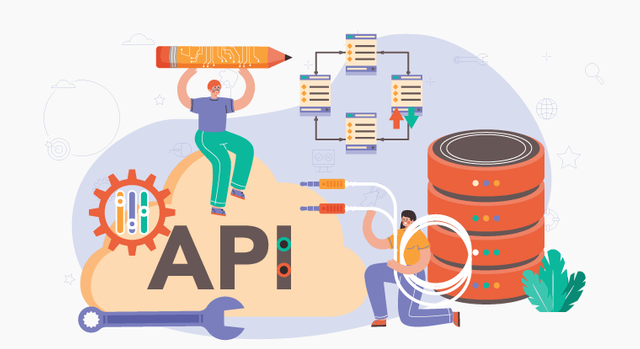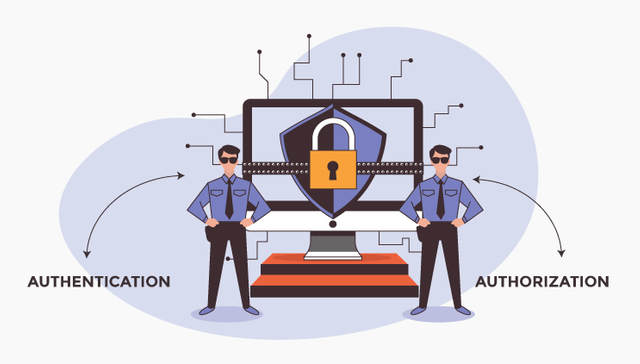API, or Application Programming Interface, never runs out of advantages in today's modern web application development. Most business users consider it the best development method because it provides flexibility, scalability, and rapid development.

The REST API (Representational State Transfer) is a URI-based web services API. It adheres to all architectural style constraints and enables business users to easily download and run the code via JavaScript and HTTP protocols. SOAP (Simple Object Access Protocol) is its protocol, on the other hand. In terms of security and messaging, SOAP can become more complex.
Understanding the Security of REST APIs
Because most APIs use the HTTP protocol, it is critical to protect the API from bogus and fraudulent users. To protect the data, several web users have integrated the website with the security system. When discussing REST API security, there are two things to keep in mind.
Authentication
It is a process by which the API manager ensures the business owner that the users who access the REST API are who they claim to be. In this process, the user logs into the web using a username and password or security tokens that have been provided in advance. It ensures that the company's web access does not fall into the hands of the wrong people.
REST API security methods include:
-Cookie-based authentication
-Token-based authentication
-OpenID
-Third-party access, such as (OAuth, API token)
-SAML allows users to access multiple applications using a single login credential.
Cookies (XSRF, JWT, and XSS) and token-based authentications work well for a web application only. Token authentication is the best option for securing the REST API for web applications and mobile access.
Authorization
It is a set of rules that governs the user's behaviour. It prevents users from performing certain actions and tracks what they do. Without authorization, any user can easily gain access to the system and delete sensitive data on purpose or by accident. This is prevented by authorization. As a result, when using API security tools, it is critical to consider both factors.
Understanding The SOAP Security Protocol
SOAP security is a messaging protocol that prevents unauthorised users from gaining access to messages containing user information via an API gateway. WS (Web Standard) security is typically used to accomplish this. As cyber security has become a top priority for every reputable company, it has become critical to ensure that web API security remains intact.
To ensure that SOAP security is tight, the WS security consists of a set of principles that provide confidentiality and specific authentication processes. Passwords, digital signatures, and encryption are all part of WS security. SOAP security safeguards sensitive data by integrating security into the API infrastructure during end-to-end api management.

What Is the Difference Between REST API Security and SOAP Security?
Rest API management is an architectural style, not a protocol. The SOAP API employs the service interface, whereas the REST API employs URIs (Uniform Resource Identifiers). SOAP API is designed in accordance with the API's exposed functionalities. The SOAP API is an XML-based protocol that allows two or more users to communicate with one another. The sole concern of the SOAP API is to prevent unauthorised users from accessing sensitive information in messages. REST API, on the other hand, is HTTP-based. It requests and accesses data via HTTP, which can be used to GET, PUT, POST, and DELETE various data types.
The REST API retrieves resource data, whereas the SOAP API executes the operation.
REST API supports a wide range of data formats, including HTML, XML, JSON, and plain text. When you enter the URL and choose the HTTP method of GET, POST, or PATCH, it accesses data. It sends a slew of responses to the REST API, which then accesses the resource data. SOAP API, on the other hand, is limited to XML. The SOAP envelope, header, and body are all part of the data format. SOAP API assists in the creation, recovery, and deletion of previous records such as passwords, customer information, and leads.
SOAP API necessitates more bandwidth, whereas REST API only necessitates a URL as a resource.
Although SOAP API employs an envelope-style payload transport, REST API is a web service that does not necessitate a large number of resources. SOAP API requests require a significant amount of bandwidth because they contain more data than REST API requests. As a result, increased bandwidth may result in increased unnecessary traffic.
Both APIs use different security methods.
SOAP API supports Web Services Security, making it ideal for integrating with enterprise-level API security tools. It also supports SSL (Secure Sockets Layer) encryption from end to end. It is enterprise-level protection that is missing from REST API security.
Some common methods for securing the REST API include:
-Authentication and authorization -Always use HTTPS
-User-machine
-generated API keys
-OAuth 2.0 to secure a variety of REST APIs
-OpenID, a free and open authentication protocol
The following are the best practises for WSS:
-Keeping track of auditing and logging management
-Keeping track of phone calls to the web service
-Avoiding the addition of sensitive data
-Maintaining proper authentication
-Tracking the overall operation of the business
REST API supports both HTTP and HTTPS protocols. SSL is used by both APIs to protect sensitive data. However, WS security provides an additional layer of security in the SOAP API to ensure that the message content is only read by the correct server.
REST API calls can be cached, but SOAP API calls cannot.
Caching the data means that it can be reused in the future without requiring another request to the server. To ensure that scalability and performance go hand in hand, REST APIs require you to implement the cache method. SOAP API requests are sent via POST, and the responses are unlikely to be cached at the HTTP level.
The REST and SOAP APIs handle the app payload differently
REST API uses HTTP and JSON to reduce the size of your application's payload. However, SOAP API only uses XML, making it more difficult and complex. In comparison to the lightweight REST API, the SOAP API has a strict communication policy that is tightly coupled with the server. REST API, on the other hand, provides a higher level of security than the two technologies, making it easier to update and make changes while maintaining good client interaction.
API Security Testing Methods
API security testing is critical in ensuring that the API remains secure and under load. It ensures data and resource confidentiality, availability, and integrity. Some of the best advanced security methods to secure APIs are:
-Conduct tests with API testing tools.
-Construct test cases
-Authorization and authentication
-Having access control over APIs at the resource level
-Conduct regular API security tests and process automation at an early stage.
-Integrate API security tools into the existing workflow.
-Conduct dynamic API security tests to identify and mitigate vulnerabilities.
-Run static API security tests to validate the code and pinpoint the source of the problem.
-Utilize software composition analysis to identify open-source vulnerabilities and eliminate bugs.
-Use invalid API inputs as an untrusted source to test the agility.
-Experiment with injection attacks to see if the API rejects the requests.
-Change the parameters to see if the API validates and sense-checks them.
-Consider the server access controls.
-Maintain a secure and confidential password management system.
-Send unhandled HTTP requests to ensure that unneeded methods are not permitted on the server.
To Summarise
When deciding on the best API for web services, business users prefer the REST API security method unless the enterprise-level application requires the tight security provided by SOAP API. REST API provides lightweight communication via HTTP protocols and small payloads such as the JSON data format. It improves the use of caching while using fewer resources. However, SOAP API provides enterprise-level security and should be used to integrate with legacy systems
Finally, whatever technology you choose, the key is to create a feasible API using the best and easiest practises and security tools. 500apps' Unified.cc API platform allows you to connect to multiple APIs using a single API. The Unified.cc application allows you to increase your delivery speed while also providing advanced API security for your application development. Visit the 500apps website right now to learn more about API security tools and tricks.